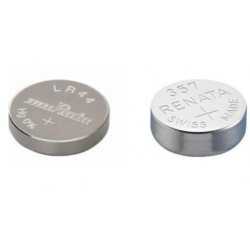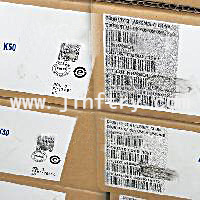Button Battery LR44 vs 357

Button batteries are small, cylindrical power sources commonly used in various electronic devices, from watches and calculators to small toys and medical devices. Among the plethora of button battery types available, LR44 and 357 are two commonly used models, each with distinct characteristics and applications. Understanding the differences between LR44 and 357 batteries is essential for selecting the appropriate power source for specific devices. This comparison aims to elucidate the features, uses, and advantages of LR44 and 357 button batteries, aiding consumers in making informed choices for their electronic devices.
Introduction to LR44 Battery
The LR44 battery, also known by other designations such as AG13, A76, and 357, is a small cylindrical alkaline button cell battery commonly used in various electronic devices. Despite its small size, the LR44 battery packs a punch in terms of power and reliability, making it a popular choice for a wide range of applications.
The LR44 battery is typically cylindrical in shape with a diameter of about 11.6 millimeters (0.457 inches) and a height of about 5.4 millimeters (0.213 inches). It is commonly referred to as a "button cell" due to its resemblance to a button or coin.
LR44 batteries have a nominal voltage of 1.5 volts, making them suitable for powering various low-drain electronic devices such as calculators, watches, small toys, laser pointers, digital thermometers, and remote controls. Despite their small size, LR44 batteries offer a relatively good capacity for their intended applications.
LR44 batteries are typically composed of alkaline chemistry, which provides a stable and reliable power source for electronic devices. Alkaline batteries are known for their long shelf life and relatively high energy density, making them suitable for use in devices that require intermittent or continuous power.
In summary, the LR44 battery is a small yet powerful alkaline button cell battery widely used in various electronic devices. Its compact size, reliable performance, and compatibility with numerous equivalent designations make it a popular choice for powering everyday gadgets and instruments. Whether you need to replace a battery in your watch, calculator, or remote control, the LR44 battery is likely to be a suitable and readily available option.
Introduction to 357 Battery
The 357 battery, also known by other designations such as SR44, SR44SW, and SR1154, is a type of small cylindrical button cell battery commonly used in a variety of electronic devices. Despite its modest size, the 357 battery delivers reliable power, making it a popular choice for applications that require a compact yet efficient power source.
The 357 battery typically features a cylindrical shape with a diameter of approximately 11.6 millimeters (0.457 inches) and a height of about 5.4 millimeters (0.213 inches). Its compact size and button-like appearance make it suitable for use in devices with limited space.
357 batteries are typically silver oxide batteries, offering a nominal voltage of 1.55 volts. This slightly higher voltage compared to other common button cell batteries provides stable power output over the battery's lifespan, making it suitable for devices that require consistent voltage levels.
In summary, the 357 battery is a small yet powerful button cell battery commonly used in various electronic devices. Its compact size, stable voltage output, and compatibility with multiple equivalent designations make it a versatile choice for powering everyday gadgets and instruments. Whether you need to replace a battery in your watch, calculator, or camera, the 357 battery is likely to be a suitable and readily available option.
LR44 vs 357: Comparison Table
|
Feature |
LR44 |
357 |
|
Size |
11.6mm diameter, 5.4mm height |
5.4mm diameter, 9.5mm to 9.6mm height |
|
Chemistry |
Alkaline Zinc Manganese |
Silver Oxide |
|
Voltage |
1.5v |
1.55v (slightly higher) |
|
Rechargeable |
No |
No |
|
Capacity |
Lower |
Higher |
|
Voltage Stability |
Decreases over time |
More stable voltage output |
|
Lifespan |
Up to 2 years (low-drain devices) |
Longer than LR44 |
|
Common Applications |
Low-drain devices (remote controls, key fobs) |
High-drain devices (medical devices, laser pointers) |
|
Cost |
Less expensive |
More expensive |
In short:
-
If you need a cheap, readily available battery for low-power devices, the LR44 is a good choice.
-
If you need a longer-lasting battery with stable voltage for high-drain devices, the 357 is a better option, although it costs more.
LR44 vs 357: Size
LR44 and 357 are both types of small cylindrical batteries commonly used in small electronic devices. However, they are not the same size.
LR44 batteries are also known as AG13 or A76 batteries. They have a diameter of about 11.6 millimeters and a height of about 5.4 millimeters.
357 batteries, on the other hand, are also known as SR44 or SR44W batteries. They are slightly larger, with a diameter of about 11.6 millimeters and a height of about 5.4 millimeters.
While they share the same diameter, the 357 battery is typically slightly taller than the LR44 battery. This difference in height may affect their compatibility in certain devices, so it's important to check the specifications of the device to ensure you're using the correct size battery.
LR44 vs 357: Equivalents
Both LR44 and 357 batteries have several equivalent part numbers, making it easier to find replacements for them depending on availability and location.
For LR44 Battery:
AG13
A76
357
SR44
G13
PX76A
For 357 Battery:
SR44
AG13
A76
SG13
PX76A
LR44 vs 357: Chemistry
LR44 and 357 batteries are both alkaline button cell batteries, but they have slightly different chemistries.
LR44 batteries typically use alkaline chemistry, which consists of a zinc anode and a manganese dioxide cathode, with potassium hydroxide (KOH) serving as the electrolyte. This chemistry provides a relatively stable voltage output and a decent capacity for a variety of small electronic devices.
357 batteries, on the other hand, can come in a few different chemistries, including silver oxide (SR44) or alkaline (LR44). The SR44 variant of the 357 battery uses silver oxide chemistry, which provides a higher energy density and longer shelf life compared to alkaline chemistry. It's often used in applications where higher voltage and longer operating life are required, such as in precision instruments and medical devices. However, the alkaline variant of the 357 battery would have similar chemistry to the LR44 battery.
So, while LR44 batteries typically use alkaline chemistry, 357 batteries can have either silver oxide or alkaline chemistry, depending on the specific variant you're referring to.
LR44 vs 357: Voltage
LR44 and 357 batteries typically have different voltage outputs due to their different chemistries.
LR44 batteries typically have a voltage output of around 1.5 volts. This voltage is common among alkaline button cell batteries and is suitable for powering various small electronic devices like calculators, watches, and toys.
357 batteries, on the other hand, can come in different variants with varying voltage outputs:
SR44 batteries (also known as silver oxide 357 batteries) usually have a voltage output of around 1.55 volts. This slightly higher voltage is advantageous for precision instruments and devices that require stable voltage output over a longer period.
LR44 batteries (also known as alkaline 357 batteries) typically have a voltage output of around 1.5 volts, similar to LR44 batteries. These are suitable for devices that accept LR44 batteries but may offer slightly different chemistry options.
So, while LR44 batteries typically have a voltage output of 1.5 volts, 357 batteries can have either a slightly higher voltage (in the case of silver oxide variants) or the same voltage (in the case of alkaline variants). It's essential to use the correct voltage battery for your device to avoid potential damage or malfunction.
LR44 vs 357: Rechargeable
LR44 and 357 batteries are typically not rechargeable in their standard form. They are usually single-use, disposable alkaline or silver oxide button cell batteries.
LR44 vs 357: Capacity
LR44 and 357 batteries typically have different capacities, largely due to differences in chemistry and construction.
LR44 batteries, being alkaline button cell batteries, typically have a capacity ranging from around 100 to 150 milliampere-hours (mAh). This capacity can vary slightly depending on the manufacturer and specific construction of the battery.
357 batteries, on the other hand, can come in different variants with varying capacities:
SR44 batteries (silver oxide 357 batteries) typically have higher capacities compared to LR44 batteries. They often have capacities ranging from around 150 to 200 milliampere-hours (mAh) or even higher in some cases. The higher capacity is due to the higher energy density of silver oxide chemistry compared to alkaline chemistry.
LR44 batteries (alkaline 357 batteries) usually have capacities similar to standard LR44 batteries, ranging from around 100 to 150 milliampere-hours (mAh).
Overall, SR44 batteries (silver oxide 357) tend to have higher capacities compared to LR44 batteries, regardless of whether they're silver oxide or alkaline variants. However, it's important to note that specific capacities can vary depending on factors such as the manufacturer and battery construction.
LR44 vs 357: Voltage Stability
LR44 and 357 batteries generally exhibit similar voltage stability characteristics, particularly when comparing batteries of the same chemistry (alkaline or silver oxide).
Both LR44 and 357 batteries, when new and under light load conditions, typically provide a relatively stable voltage output throughout their lifespan. However, as the battery discharges and approaches the end of its life, the voltage output may gradually decrease.
In terms of voltage stability over time, silver oxide batteries, including SR44 (silver oxide 357), often maintain a more stable voltage output compared to alkaline batteries like LR44. This is because silver oxide chemistry tends to provide a more consistent voltage output over the discharge curve.
However, in practical terms, for many low-drain applications where LR44 or alkaline 357 batteries are commonly used (such as in watches, calculators, or small electronic devices), the voltage stability differences between the two types may not be significant enough to be noticeable in everyday use.
For precision instruments or devices that require extremely stable voltage output over their entire lifespan, silver oxide batteries like SR44 might be preferred due to their superior voltage stability characteristics.
LR44 vs 357: Lifespan
The lifespan of LR44 and 357 batteries can vary depending on factors such as usage patterns, discharge rates, and environmental conditions.
LR44 batteries: Alkaline LR44 batteries typically have a lifespan ranging from several months to a few years, depending on usage. The exact lifespan can vary based on factors such as the device's power consumption and how frequently it is used. In low-drain devices like watches or calculators, LR44 batteries may last for a year or more, while in higher-drain devices, such as certain toys or small electronic devices, they may need replacement more frequently.
357 batteries: The lifespan of 357 batteries can vary depending on whether they are silver oxide or alkaline variants:
Silver oxide 357 (SR44) batteries generally have a longer lifespan compared to LR44 batteries. They often provide more consistent voltage output over their lifespan and are typically used in precision instruments and devices that require stable power sources. Depending on usage and discharge rates, silver oxide 357 batteries can last several years in some applications.
Alkaline 357 batteries typically have a lifespan similar to LR44 batteries, ranging from several months to a few years, depending on usage patterns and environmental conditions.
LR44 vs 357: Applications
LR44 and 357 batteries are both commonly used in a variety of small electronic devices, but they are often preferred for different applications due to differences in voltage, capacity, and chemistry.
Common applications for LR44 batteries
Watches: LR44 batteries are commonly used in analog and digital wristwatches.
Calculators: Many small electronic calculators use LR44 batteries to power their display and basic functions.
Thermometers: Some digital thermometers, especially those used for medical purposes, utilize LR44 batteries for power.
Keychain LED flashlights: Small LED flashlights that attach to keychains often use LR44 batteries due to their compact size.
Toys and novelty items: LR44 batteries are often used to power small electronic toys, greeting cards with sound modules, and other novelty items.
Common applications for 357 batteries
Precision instruments: Devices that require stable voltage output and long-term reliability, such as certain types of electronic measuring instruments, may use silver oxide 357 (SR44) batteries.
Cameras: Some film cameras and certain digital cameras use 357 batteries to power their light meters and other electronic components.
Laser pointers: Some laser pointers and presentation remotes use 357 batteries for power.
Medical devices: Certain medical devices, such as glucometers and blood pressure monitors, may utilize 357 batteries for power.
Hearing aids: Some models of hearing aids use 357 batteries due to their relatively long lifespan and stable voltage output.
LR44 vs 357: Cost
The cost of LR44 and 357 batteries can vary depending on several factors, including brand, quantity purchased, and whether they are purchased as generic or name-brand batteries.
LR44 batteries: These batteries are usually among the most affordable options for button cell batteries. Since they are commonly used in a wide range of small electronic devices, they are often produced in large quantities, which can help keep costs down. However, prices can still vary depending on the brand and where they are purchased. Generic or off-brand LR44 batteries may be cheaper than name-brand options.
357 batteries: The cost of 357 batteries can vary depending on whether they are silver oxide (SR44) or alkaline variants. Silver oxide 357 batteries tend to be more expensive than LR44 batteries due to their higher energy density and longer lifespan. However, alkaline 357 batteries may be more comparable in price to LR44 batteries. As with LR44 batteries, generic or off-brand options may be more affordable than name-brand batteries.
In general, when comparing LR44 and 357 batteries of the same chemistry (alkaline or silver oxide), LR44 batteries are often the more cost-effective option. However, if the specific application requires the higher voltage or longer lifespan provided by 357 batteries, the additional cost may be justified.
LR44 vs 357: Disadvantages
Both LR44 and 357 batteries have their advantages, but they also come with some disadvantages:
Disadvantages of LR44 batteries
Limited capacity: LR44 batteries typically have a lower capacity compared to 357 batteries, especially silver oxide variants. This means they may need to be replaced more frequently, especially in high-drain devices.
Voltage output: LR44 batteries have a lower nominal voltage (1.5 volts) compared to some variants of 357 batteries, such as silver oxide 357 (SR44), which typically have a nominal voltage of 1.55 volts. While this voltage difference may not be significant in many applications, it can affect the performance of certain devices that require higher voltage levels.
Voltage drop-off: As LR44 batteries discharge, their voltage output may drop off more quickly compared to some other battery types, leading to decreased performance in devices that require a stable voltage source.
Disadvantages of 357 batteries
Higher cost: Silver oxide 357 (SR44) batteries, in particular, tend to be more expensive than LR44 batteries. This higher cost may be a disadvantage for some consumers, especially if they require batteries for devices with frequent battery replacement needs.
Limited availability: 357 batteries, especially silver oxide variants, may be less commonly available compared to LR44 batteries. This can make it more challenging to find replacements, especially in areas with limited access to specialty batteries.
LR44 vs 357: Similarities
LR44 and 357 batteries share several similarities, despite their differences in size, chemistry, and voltage.
Button cell form factor: Both LR44 and 357 batteries are small, cylindrical button cell batteries commonly used in various small electronic devices.
Common applications: Both LR44 and 357 batteries are used in a wide range of electronic devices, including watches, calculators, toys, thermometers, laser pointers, and small electronic gadgets.
Compatibility: In some cases, LR44 and 357 batteries can be used interchangeably in devices that accept both battery types, although it's essential to ensure compatibility with the device's specifications.
Alkaline variants: Both LR44 and 357 batteries are available in alkaline chemistry variants, providing a cost-effective option for devices with lower power requirements.
Size: While LR44 and 357 batteries may differ slightly in height, they share the same diameter of approximately 11.6 millimeters, allowing them to fit into the same battery compartments in many devices.
SR44 vs 357
SR44 and 357 batteries are often used interchangeably because they share similar physical dimensions and are compatible with many of the same devices. However, there are some differences between them.
Chemistry: SR44 batteries are typically silver oxide batteries, while 357 batteries can be either silver oxide or alkaline. Silver oxide batteries tend to have a more stable voltage output over their lifespan compared to alkaline batteries.
Voltage: SR44 batteries usually have a slightly higher nominal voltage compared to 357 batteries. SR44 batteries typically have a nominal voltage of 1.55 volts, while 357 batteries usually have a nominal voltage of 1.5 volts.
Capacity: Silver oxide batteries, including SR44, often have higher capacity compared to alkaline batteries like the 357. This means SR44 batteries may provide longer runtime in certain devices.
Applications: SR44 batteries are commonly used in precision instruments, watches, cameras, and other devices that require stable voltage output and longer lifespan. 357 batteries, both silver oxide and alkaline variants, are also used in similar applications but may be more commonly found in everyday devices.
AG13 Battery vs 357
AG13 batteries and 357 batteries are both small cylindrical button cell batteries that share similar physical dimensions, making them compatible with many of the same devices.
Size: AG13 batteries and 357 batteries typically have the same diameter of approximately 11.6 millimeters. However, there may be slight differences in height between individual brands or variants.
Chemistry: AG13 batteries are typically alkaline manganese chemistry batteries, while 357 batteries can be either silver oxide or alkaline. Silver oxide batteries, such as those used in 357 batteries, tend to provide a more stable voltage output over their lifespan compared to alkaline batteries.
Voltage: AG13 batteries usually have a nominal voltage of 1.5 volts, which is common for alkaline button cell batteries. 357 batteries, especially silver oxide variants, may have a slightly higher nominal voltage of around 1.55 volts.
Capacity: Silver oxide batteries, like those used in 357 batteries, often have higher capacity compared to alkaline batteries like AG13. This means 357 batteries may provide longer runtime in certain devices.
Applications: AG13 batteries and 357 batteries are used in a wide range of small electronic devices, including watches, calculators, toys, and laser pointers. However, 357 batteries, particularly silver oxide variants, may be preferred for precision instruments, medical devices, and other applications that require stable voltage output and longer lifespan.
SR44 vs LR44
SR44 and LR44 batteries are both commonly used button cell batteries, but they have some differences:
Chemistry:
SR44 batteries typically use silver oxide chemistry, while LR44 batteries use alkaline chemistry.
Silver oxide batteries like SR44 tend to provide a more stable voltage output over their lifespan compared to alkaline batteries like LR44.
Voltage:
SR44 batteries usually have a slightly higher nominal voltage compared to LR44 batteries. SR44 batteries typically have a nominal voltage of 1.55 volts, while LR44 batteries usually have a nominal voltage of 1.5 volts.
Capacity:
Silver oxide batteries, such as those used in SR44 batteries, often have higher capacity compared to alkaline batteries like LR44. This means SR44 batteries may provide longer runtime in certain devices.
Applications:
SR44 batteries are commonly used in precision instruments, watches, cameras, and other devices that require stable voltage output and longer lifespan.
LR44 batteries are also used in a wide range of devices, including watches, calculators, toys, and laser pointers. However, they may be more commonly found in everyday consumer electronics.
FAQ
What does LR stand for in batteries?
The prefix "LR" in battery nomenclature typically denotes an alkaline manganese chemistry battery. However, it's important to note that the "LR" prefix itself doesn't have a specific meaning; rather, it's just part of the battery's designation code. For example, LR44 batteries are a common type of alkaline button cell battery.
Different battery manufacturers may use different prefix codes for their products, and these codes often indicate the chemistry or characteristics of the battery. Other common prefixes include "CR" for lithium batteries and "SR" for silver oxide batteries.
Can a 357 or 303 Button Battery Safely Replace an LR44?
Yes, a 357 (SR44) or 303 button battery can generally replace an LR44 battery safely in many devices. Both LR44 and 357 (SR44) batteries have the same diameter and are similar in size, so they can fit into the same battery compartments. However, there are a few important considerations to keep in mind:
Before replacing an LR44 battery with a 357 (SR44) or 303 battery, it's advisable to check the device's user manual or specifications to ensure that the replacement battery is compatible and will provide adequate performance. Additionally, if the device requires precise voltage regulation or operates in sensitive electronic circuits, it's best to use the recommended battery type to avoid potential issues.
Do LR44 batteries have silver?
No, LR44 batteries do not typically contain silver in their composition. LR44 batteries are typically alkaline manganese button cell batteries, which consist of a zinc anode, a manganese dioxide cathode, and potassium hydroxide electrolyte. They do not contain silver.
Is LR41 the same as 357?
No, LR41 and 357 batteries are not the same. They are different types of button cell batteries with different dimensions, voltages, and chemistries.
LR41 batteries:
LR41 batteries are smaller in size compared to 357 batteries.
They typically have a diameter of about 7.9 millimeters and a height of about 3.6 millimeters.
LR41 batteries usually have a nominal voltage of 1.5 volts.
They are commonly used in small electronic devices such as calculators, watches, and digital thermometers.
357 batteries:
357 batteries, also known as SR44 or SR44W batteries, have a larger size compared to LR41 batteries.
They typically have a diameter of about 11.6 millimeters and a height of about 5.4 millimeters.
357 batteries usually have a nominal voltage of 1.55 volts.
They are commonly used in precision instruments, watches, cameras, and medical devices.
While LR41 and 357 batteries may both be used in some small electronic devices, they are not interchangeable due to differences in size and voltage.
Can a 675 battery replace a LR44?
No, a 675 battery cannot safely replace an LR44 battery. LR44 batteries are typically smaller button cell batteries, whereas 675 batteries are larger and have different dimensions and specifications.
Is LR44 the same as 386?
While LR44 and 386 batteries share a similar size and shape, they have different voltages and are not interchangeable without potential risks of improper operation or damage to the device.
Read More:
CR2016 vs. CR2032: Is CR2016 Interchangeable with CR2032







